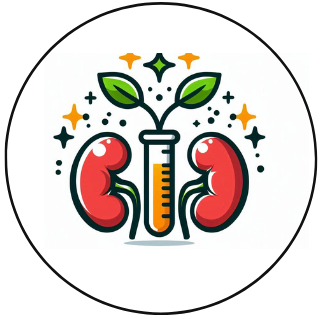When I wrote my 1st and second post about the development of artificial kidneys, I was only knowledgeable about the University of California San Francisco’s program. I have since discovered there are more runners in this race.
The development of artificial kidneys has seen remarkable progress in recent years, driven by the urgent need to provide better treatment options for patients with end-stage renal disease (ESRD). The KidneyX Innovation Accelerator, a public-private partnership between the U.S. Department of Health and Human Services and the American Society of Nephrology, has been instrumental in fostering innovation in this field. In its Artificial Kidney Prize Phase 2, KidneyX awarded funding to several promising projects aiming to revolutionize kidney replacement therapies.Kidney News+6trestlebio.com+6Yale School of Medicine+6
This post was written with research assisted by AI technology. Below is given a brief description of each artificial kidney development group that was awarded money from KidneyX, including links to each for further information on each. The advancements are amazing! The order of the following information is in no way an indicator as to which group is most advanced in this important race.
🏆 KidneyX Artificial Kidney Prize Phase 2 Winners
Trestle Biotherapeutics
Based in San Diego, Trestle Biotherapeutics is developing bioengineered kidney tissues using stem cell biology and 3D biofabrication techniques. Their goal is to create functional, stem cell-based tissues that can be implanted into patients to restore renal function, potentially eliminating the need for dialysis. The $1 million KidneyX prize will support their preclinical research to scale prototype designs and demonstrate increased functionality of these bioengineered tissues. BioSpace+1trestlebio.com+1trestlebio.com
IVIVA Medical
IVIVA Medical, a biotech startup from Massachusetts, is working on a fully implantable bioartificial kidney. Their approach involves using patient-derived cells to build implants, aiming to eliminate the need for long-term immunosuppression and reduce the risk of organ rejection. With the KidneyX funding, IVIVA plans to advance their technology to address the organ transplant shortage and improve the quality of life for patients with kidney failure. UW Medicine | Newsroom+3PR Newswire+3UCSF School of Pharmacy+3
Dr. William Chang (Yale School of Medicine)
Dr. Chang’s research focuses on engineering bioartificial kidneys by combining kidney organoids derived from stem cells with peritoneal dialysis. The concept is to incorporate a patient’s own kidney cells into the dialysis process, potentially increasing the efficiency of dialysis and leading to better patient outcomes. This innovative approach could significantly impact kidney care by enhancing the quality and effectiveness of existing treatments. Yale School of Medicine+1PR Newswire+1
The Kidney Project (UCSF and Vanderbilt University)
Led by Shuvo Roy, PhD, and William Fissell, MD, The Kidney Project aims to develop an implantable bioartificial kidney that combines a hemofilter and a bioreactor to replicate essential kidney functions. After successfully testing a prototype in preclinical models, the team received a $1 million KidneyX prize to scale up their device to human size and prepare for clinical trials. This advancement brings them closer to providing a viable alternative to dialysis and transplantation. PR Newswire+2UCSF School of Pharmacy+2UCSF School of Pharmacy+2
University of Washington’s Center for Dialysis Innovation (CDI)
The CDI team is developing the AKTIV (Ambulatory Kidney to Increase Vitality) system, a wearable artificial kidney designed to provide continuous dialysis. With support from the Northwest Kidney Centers, they aim to have a device ready for clinical trials within two years. This innovation could transform dialysis treatment by offering patients greater mobility and independence. UW Medicine | Newsroom+1Kidney News+1
🧪 Recent Developments in Artificial Kidney Technologies
Xenotransplantation Advances
Xenotransplantation, the transplantation of organs from other species, has made significant strides. In a notable case, Towana Looney, an Alabama woman, received a genetically modified pig kidney that functioned for a record 130 days before being removed due to organ rejection. This case provided valuable insights into managing immune responses in xenotransplantation. PR NewswireAP News
Similarly, Tim Andrews, a 66-year-old man with end-stage kidney disease, became the second person to receive a genetically modified pig kidney transplant. The transplant, performed at Massachusetts General Hospital, used a kidney modified by eGenesis to reduce the chances of rejection through CRISPR technology. Andrews’ kidney is functioning well, showing promise for addressing the organ shortage crisis. PR Newswire+2Time+2PR Newswire+2
Wearable and Portable Dialysis Devices
Innovations in portable dialysis devices are also progressing. Wearable Artificial Organs Inc. is developing a miniaturized wearable artificial kidney powered by rechargeable batteries, designed to provide continuous dialysis with minimal water usage. Such devices aim to enhance patient mobility and quality of life by reducing dependence on traditional dialysis infrastructure. Kidney News
🔮 Future Outlook
While significant progress has been made, artificial kidneys are still in the developmental and preclinical stages. Human trials for some of these technologies are anticipated within the next few years, but widespread availability will depend on the outcomes of these trials and subsequent regulatory approvals. Patients and healthcare providers remain hopeful that these innovations will eventually offer more effective and less burdensome treatment options for kidney failure.
It is definitely and exciting time to observe! I continue to do my own small kidney project; the Friend2Friend Kidney Project, which I started after a couple of family members had kidney transplants and I had a kidney removed. So far, I am only able to help alleviate a little stress by offering meals to the kidney patient’s family members in the waiting room. This is currently local, but I hope to grow this in the coming months and years.

